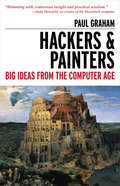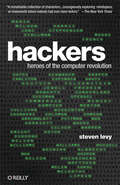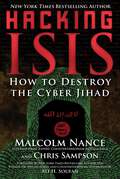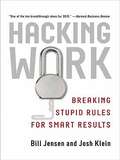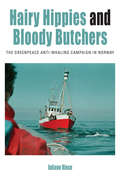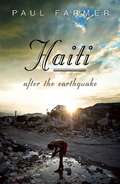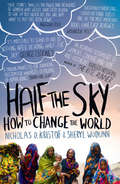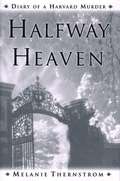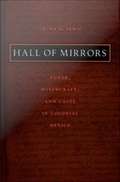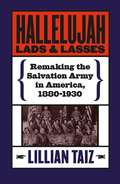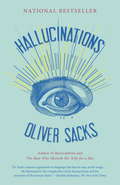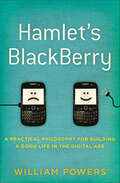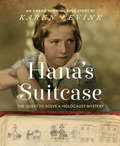- Table View
- List View
Hacker Culture and the New Rules of Innovation
by Tim RaynerFifteen years ago, a company was considered innovative if the CEO and board mandated a steady flow of new product ideas through the company’s innovation pipeline. Innovation was a carefully planned process, driven from above and tied to key strategic goals. Nowadays, innovation means entrepreneurship, self-organizing teams, fast ideas and cheap, customer experiments. Innovation is driven by hacking, and the world’s most innovative companies proudly display their hacker credentials. Hacker culture grew up on the margins of the computer industry. It entered the business world in the twenty-first century through agile software development, design thinking and lean startup method, the pillars of the contemporary startup industry. Startup incubators today are filled with hacker entrepreneurs, running fast, cheap experiments to push against the limits of the unknown. As corporations, not-for-profits and government departments pick up on these practices, seeking to replicate the creative energy of the startup industry, hacker culture is changing how we think about leadership, work and innovation. This book is for business leaders, entrepreneurs and academics interested in how digital culture is reformatting our economies and societies. Shifting between a big picture view on how hacker culture is changing the digital economy and a detailed discussion of how to create and lead in-house teams of hacker entrepreneurs, it offers an essential introduction to the new rules of innovation and a practical guide to building the organizations of the future.
Hackers & Painters: Big Ideas from the Computer Age
by Paul Graham"The computer world is like an intellectual Wild West, in which you can shoot anyone you wish with your ideas, if you're willing to risk the consequences. " --from Hackers & Painters: Big Ideas from the Computer Age, by Paul GrahamWe are living in the computer age, in a world increasingly designed and engineered by computer programmers and software designers, by people who call themselves hackers. Who are these people, what motivates them, and why should you care?Consider these facts: Everything around us is turning into computers. Your typewriter is gone, replaced by a computer. Your phone has turned into a computer. So has your camera. Soon your TV will. Your car was not only designed on computers, but has more processing power in it than a room-sized mainframe did in 1970. Letters, encyclopedias, newspapers, and even your local store are being replaced by the Internet.Hackers & Painters: Big Ideas from the Computer Age, by Paul Graham, explains this world and the motivations of the people who occupy it. In clear, thoughtful prose that draws on illuminating historical examples, Graham takes readers on an unflinching exploration into what he calls "an intellectual Wild West."The ideas discussed in this book will have a powerful and lasting impact on how we think, how we work, how we develop technology, and how we live. Topics include the importance of beauty in software design, how to make wealth, heresy and free speech, the programming language renaissance, the open-source movement, digital design, internet startups, and more.
Hackers: Heroes of the Computer Revolution - 25th Anniversary Edition
by Steven LevyThis 25th anniversary edition of Steven Levy's classic book traces the exploits of the computer revolution's original hackers -- those brilliant and eccentric nerds from the late 1950s through the early '80s who took risks, bent the rules, and pushed the world in a radical new direction. With updated material from noteworthy hackers such as Bill Gates, Mark Zuckerberg, Richard Stallman, and Steve Wozniak, Hackers is a fascinating story that begins in early computer research labs and leads to the first home computers.Levy profiles the imaginative brainiacs who found clever and unorthodox solutions to computer engineering problems. They had a shared sense of values, known as "the hacker ethic," that still thrives today. Hackers captures a seminal period in recent history when underground activities blazed a trail for today's digital world, from MIT students finagling access to clunky computer-card machines to the DIY culture that spawned the Altair and the Apple II.
Hacking Capitalism: The Free and Open Source Software Movement (Routledge Research in Information Technology and Society)
by Johan SöderbergThe Free and Open Source Software (FOSS) movement demonstrates how labour can self-organise production, and, as is shown by the free operating system GNU/Linux, even compete with some of the worlds largest firms. The book examines the hopes of such thinkers as Friedrich Schiller, Karl Marx, Herbert Marcuse and Antonio Negri, in the light of the recent achievements of the hacker movement. This book is the first to examine a different kind of political activism that consists in the development of technology from below.
Hacking Europe
by Ruth Oldenziel Gerard AlbertsHacking Europe traces the user practices of chopping games in Warsaw, hacking software in Athens, creating chaos in Hamburg, producing demos in Turku, and partying with computing in Zagreb and Amsterdam. Focusing on several European countries at the end of the Cold War, the book shows the digital development was not an exclusively American affair. Local hacker communities appropriated the computer and forged new cultures around it like the hackers in Yugoslavia, Poland and Finland, who showed off their tricks and creating distinct "demoscenes. " Together the essays reflect a diverse palette of cultural practices by which European users domesticated computer technologies. Each chapter explores the mediating actors instrumental in introducing and spreading the cultures of computing around Europe. More generally, the "ludological" element--the role of mischief, humor, and play--discussed here as crucial for analysis of hacker culture, opens new vistas for the study of the history of technology.
Hacking Growth: How Today's Fastest-Growing Companies Drive Breakout Success
by Morgan Brown Sean EllisThe definitive playbook by the pioneers of Growth Hacking, one of the hottest business methodologies in Silicon Valley and beyond.It seems hard to believe today, but there was a time when Airbnb was the best-kept secret of travel hackers and couch surfers, Pinterest was a niche web site frequented only by bakers and crafters, LinkedIn was an exclusive network for C-suite executives and top-level recruiters, Facebook was MySpace’s sorry step-brother, and Uber was a scrappy upstart that didn’t stand a chance against the Goliath that was New York City Yellow Cabs. So how did these companies grow from these humble beginnings into the powerhouses they are today? Contrary to popular belief, they didn’t explode to massive worldwide popularity simply by building a great product then crossing their fingers and hoping it would catch on. There was a studied, carefully implemented methodology behind these companies’ extraordinary rise. That methodology is called Growth Hacking, and it’s practitioners include not just today’s hottest start-ups, but also companies like IBM, Walmart, and Microsoft as well as the millions of entrepreneurs, marketers, managers and executives who make up the community of GrowthHackers.com.Think of the Growth Hacking methodology as doing for market-share growth what Lean Start-Up did for product development, and Scrum did for productivity. It involves cross-functional teams and rapid-tempo testing and iteration that focuses customers: attaining them, retaining them, engaging them, and motivating them to come back and buy more. An accessible and practical toolkit that teams and companies in all industries can use to increase their customer base and market share, this book walks readers through the process of creating and executing their own custom-made growth hacking strategy. It is a must read for any marketer, entrepreneur, innovator or manger looking to replace wasteful big bets and "spaghetti-on-the-wall" approaches with more consistent, replicable, cost-effective, and data-driven results.
Hacking ISIS: How to Destroy the Cyber Jihad
by Malcolm Nance Christopher SampsonThis book is written by two of the leading terrorist experts in the world - Malcolm Nance, NBC News/MSNBC terrorism analyst and Christopher Sampson, cyber-terrorist expert. Malcolm Nance is a 35 year practitioner in Middle East Special Operations and terrorism intelligence activities. Chris Sampson is the terrorism media and cyber warfare expert for the Terror Asymmetric Project and has spent 15 years collecting and exploiting terrorism media. For two years, their Terror Asymmetrics Project has been attacking and exploiting intelligence found on ISIS Dark Web operations.Hacking ISIS will explain and illustrate in graphic detail how ISIS produces religious cultism, recruits vulnerable young people of all religions and nationalities and disseminates their brutal social media to the world.More, the book will map out the cyberspace level tactics on how ISIS spreads its terrifying content, how it distributes tens of thousands of pieces of propaganda daily and is winning the battle in Cyberspace and how to stop it in its tracks.Hacking ISIS is uniquely positioned to give an insider’s view into how this group spreads its ideology and brainwashes tens of thousands of followers to join the cult that is the Islamic State and how average computer users can engage in the removal of ISIS from the internet.
Hacking Life: Systematized Living and Its Discontents (Strong Ideas)
by Joseph M. ReagleIn an effort to keep up with a world of too much, life hackers sometimes risk going too far.Life hackers track and analyze the food they eat, the hours they sleep, the money they spend, and how they're feeling on any given day. They share tips on the most efficient ways to tie shoelaces and load the dishwasher; they employ a tomato-shaped kitchen timer as a time-management tool.They see everything as a system composed of parts that can be decomposed and recomposed, with algorithmic rules that can be understood, optimized, and subverted. In Hacking Life, Joseph Reagle examines these attempts to systematize living and finds that they are the latest in a long series of self-improvement methods. Life hacking, he writes, is self-help for the digital age's creative class.Reagle chronicles the history of life hacking, from Benjamin Franklin's Poor Richard's Almanack through Stephen Covey's 7 Habits of Highly Effective People and Timothy Ferriss's The 4-Hour Workweek. He describes personal outsourcing, polyphasic sleep, the quantified self movement, and hacks for pickup artists. Life hacks can be useful, useless, and sometimes harmful (for example, if you treat others as cogs in your machine). Life hacks have strengths and weaknesses, which are sometimes like two sides of a coin: being efficient is not the same thing as being effective; being precious about minimalism does not mean you are living life unfettered; and compulsively checking your vital signs is its own sort of illness. With Hacking Life, Reagle sheds light on a question even non-hackers ponder: what does it mean to live a good life in the new millennium?
Hacking Work
by Bill Jensen Josh KleinWhy work harder than you have to? One manager kept his senior execs happy by secretly hacking into the company's database, providing them the reports they needed in one-third the time. Hacking is a powerful solution to every stupid procedure, tool, rule, and process we are forced to endure. Benevolent hackers are saving business from itself. It would be so much easier to do great work if not for lingering bureaucracies, outdated technologies, and deeply irrational rules and procedures. These things are killing us. Frustrating? Hell, yes. But take heart-there's an army of heroes coming to the rescue. Today's top performers are taking matters into their own hands: bypassing sacred structures, using forbidden tools, and ignoring silly corporate edicts. In other words, they are hacking work to increase their efficiency and job satisfaction. Consultant Bill Jensen teamed up with hacker Josh Klein to expose the cheat codes that enable people to work smarter instead of harder. Once employees learn how to hack their work, they accomplish more in less time. They cut through red tape and circumvent stupid rules. It's about making the system work for you, so you can take control of your workload, increase your productivity, and help your company succeed-in spite of itself.
Hacking the Future: Privacy, Identity, and Anonymity on the Web
by Cole StrykerIs anonymity a crucial safeguard—or a threat to society? &“One of the most well-informed examinations of the Internet available today&” (Kirkus Reviews). &“The author explores the rich history of anonymity in politics, literature and culture, while also debunking the notion that only troublemakers fear revealing their identities to the world. In relatively few pages, the author is able to get at the heart of identity itself . . . Stryker also introduces the uninitiated into the &‘Deep Web,&’ alternative currencies and even the nascent stages of a kind of parallel Web that exists beyond the power of governments to switch it off. Beyond even that is the fundamental question of whether or not absolute anonymity is even possible.&” —Kirkus Reviews &“Stryker explains how significant web anonymity is to those key companies who mine user data personal information of, for example, the millions of members on social networks. . . . An impassioned, rational defense of web anonymity and digital free expression.&” —Publishers Weekly
Hairy Hippies and Bloody Butchers: The Greenpeace Anti-Whaling Campaign in Norway
by Juliane RieseIn the popular imagination, no issue has been more closely linked with the environmental group Greenpeace than whaling. Opposition to commercial whaling has inspired many of the organization's most dramatic and high-profile "direct actions"-as well as some of its most notable failures. This book provides an inside look at one such instance: Greenpeace's decades-long campaign against the Norwegian whaling industry. Combining historical narrative with systems-theory analysis, author Juliane Riese shows how the organization's self-presentation as a David pitted against whale-butchering Goliaths was turned on its head. She recounts how opponents successfully discredited the campaign while Greenpeace struggled with internal disagreements and other organizational challenges, providing valuable lessons for other protest movements.
Haiti After the Earthquake
by Paul Farmer"On January 12, 2010 a massive earthquake laid waste to Port-au-Prince, Haiti, killing hundreds of thousands of people. Within three days, Dr. Paul Farmer arrived in the Haitian capital, along with a team of volunteers, to lend his services to the injured. In this vivid narrative, Farmer describes the incredible suffering--and resilience--that he encountered in Haiti. Having worked in the country for nearly thirty years, he skillfully explores the social issues that made Haiti so vulnerable to the earthquake--the very issues that make it an "unnatural disaster. " Complementing his account are stories from other doctors, volunteers, and earthquake survivors. Haiti after the earthquake will both inform and inspire readers to stand with the Haitian people against the profound economic and social injustices that formed the fault line for this disaster"--Provided by publisher.
Haiti-Haitii: Philosophical Reflections for Mental Decolonization
by Jean-Bertrand AristideIn Haiti - Haitii Jean-Bertrand Aristide combines the artistry of Swahili with the poetic incisiveness of his native Kreyol to produce an eloquent critique of colonialism and an affirmation of humanist principles. Aristide uses poetry, prose and proverbs to tell the epic story of Haiti, the world's first independent Black republic. He chronicles the brutality of the colonisers and the ways in which they attempted to dehumanise Haitians. Aristide illustrates how Haitians' 300-year journey to freedom has been guided by the African philosophy of Ubuntu, a world view that emphasises human solidarity. Today, Aristide writes, it is this same philosophy that can empower a new generation of Africans to resist neo-colonialism. This book is the inspiring inside story of the country which has both suffered in unimaginable ways and dared to dream of freedom. It will be essential reading for all those interested in the past, present and future of Haiti and the prospects for national liberation across the world in the 21st century.
Halal Sex: The Intimate Lives of Muslim Women in North America
by Sheima BenembarekAn unprecedented glimpse into the sex lives of female and gender-expansive Muslims living across Canada and the United States.In the Muslim world, sex is permissible (or halal) only within the confines of marriage. Outside of wedlock, the act is considered haram, a sin of the faith. Girls are taught to protect their virginity; their mothers, if not forgoing &“the talk&” altogether, obscure the facts with elliptical language and metaphors.So, what happens when immigrants and the children of immigrants set about pursuing an open and active sex life on a more sexually liberated continent, amid western peers and attitudes? The six deeply personal stories in Halal Sex attempt to answer this question, bringing a hushed conversation out into the open.Within these pages you&’ll meet Azar, a non-binary trans Sufi; Bunmi, a Nigerian navigating shame and Tinder; Eman, a lesbian stand-up comic in an interfaith marriage; Taslim, a virgin in her forties struggling to erect healthy boundaries; and Khadijah, an exotic dancer and sex worker.With great empathy, Sheima Benembarek makes space for the honesty and vulnerability of each participant and handles their stories with gentleness and care. What emerges is a tapestry of a diverse Islam—encompassing a wide variety of cultural and religious and socioeconomic backgrounds—and a frank, feminist contribution to the advancement of Muslim sexual education and pleasure.
Half The Sky: How to Change the World
by Nicholas D. Kristof Sheryl WuDunnPulitzer Prize-winning reporting team, husband and wife Nicholas D. Kristof and Sheryl WuDunn, take us on a journey through Africa and Asia to meet an extraordinary array of exceptional women struggling against terrible circumstances. More girls have been killed in the last fifty years, precisely because they are girls, than men were killed in all the wars of the twentieth century combined. More girls are killed in this routine 'gendercide' in any one decade than people were slaughtered in all the genocides of the twentieth century. In the nineteenth century, the central moral challenge was slavery. In the twentieth, it was totalitarianism. In the twenty-first, Kristof and WuDunn demonstrate, it will be the struggle for gender equality in the developing world. Fierce, moral, pragmatic, full of amazing stories of courage and inspiration, HALF THE SKY is essential reading for every global citizen.
Half The Sky: How to Change the World
by Nicholas D. Kristof Sheryl WuDunnPulitzer Prize-winning reporting team, husband and wife Nicholas D. Kristof and Sheryl WuDunn, take us on a journey through Africa and Asia to meet an extraordinary array of exceptional women struggling against terrible circumstances. More girls have been killed in the last fifty years, precisely because they are girls, than men were killed in all the wars of the twentieth century combined. More girls are killed in this routine 'gendercide' in any one decade than people were slaughtered in all the genocides of the twentieth century. In the nineteenth century, the central moral challenge was slavery. In the twentieth, it was totalitarianism. In the twenty-first, Kristof and WuDunn demonstrate, it will be the struggle for gender equality in the developing world. Fierce, moral, pragmatic, full of amazing stories of courage and inspiration, HALF THE SKY is essential reading for every global citizen.
Half a Citizen: Life on welfare in Australia
by John Murphy Suellen Murray Sonia Martin Greg Marston Jenny Chalmers'This important and illuminating book provides a powerful and harrowing depiction of the inadequacies of the Australian welfare system. Its findings challenge the foundations and direction of the welfare reform agenda.' - Professor Peter Saunders, University of New South Wales'This major new study challenges many myths about life on welfare and in low paid work. It should be read by anyone concerned with welfare reform.' - Jane Millar, Professor of Social Policy, University of BathWhat is it really like to be unemployed and on welfare? How do you make ends meet? Does the welfare system actually help people get back into jobs?Half a Citizen draws on in-depth interviews with 150 welfare recipients to reveal people struggling to get by on a low income, the anxieties of balancing paid work with income support, and how unstable housing makes it difficult to get ahead.By investigating the lives beyond the statistics, Half a Citizen also explodes powerful myths and assumptions on which welfare policy is based. The majority of welfare recipients interviewed are very active, in paid work, caring for children or for other family members, and they see themselves as contributing and participating citizens, even if they sometimes feel they are being treated as 'half a citizen'. These stories of resilience and passion bear no resemblance to the clich d images of dependence, laziness, and social isolation which underpin social policy and media debate.
Halfway Heaven: Diary Of A Harvard Murder
by Melanie ThernstromA few days before the end of spring term, an anonymous note arrived atThe Harvard Crimson. It contained a photograph of a student and a typed message: "Keep this picture. There will soon be a very juicy story involving this woman. " Now, the critically acclaimed author of The Dead Girl reveals the never-before-told story of two girls--one from Ethiopia, the other from Vietnam--for whom admission to Harvard was like "halfway heaven," the stepping stone to the American Dream that would ensure success for them and their families; and how they met instead with the darkest of all fates: a tragedy that might have been prevented. Based on Melanie Thernstrom's article in The New Yorker, here is the complete story of an unfathomable murder/suicide that shocked the country--and a groundbreaking expose of one of America's most distinguished universities. Drawing on the astonishing diaries kept by the murderer, Thernstrom reconstructs the inner life of a deeply troubled girl, struggling against isolation and depression, uncannily self-aware, and desperate for help. Sifting through layers of responsibility and silence, Thernstrom has pieced together a story that points back to Harvard and its calculated efforts to whitewash the story, and to protect and promote its distinguished reputation at the cost of its own student body. A work of dazzling investigative journalism and literary pathos,Halfway Heavenraises profound questions about the nature of attachment, obsession, female friendship, and the power of loneliness to transform love into destruction.
Hall of Mirrors: Power, Witchcraft, and Caste in Colonial Mexico
by Laura A. LewisThrough an examination of caste in sixteenth- and seventeenth-century Mexico, Hall of Mirrors explores the construction of hierarchy and difference in a Spanish colonial setting. Laura A. Lewis describes how the meanings attached to the categories of Spanish, Indian, black, mulatto, and mestizo were generated within that setting, as she shows how the cultural politics of caste produced a system of fluid and relational designations that simultaneously facilitated and undermined Spanish governance. Using judicial records from a variety of colonial courts, Lewis highlights the ethnographic details of legal proceedings as she demonstrates how Indians, in particular, came to be the masters of witchcraft, a domain of power that drew on gendered and hegemonic caste distinctions to complicate the colonial hierarchy. She also reveals the ways in which blacks, mulattoes, and mestizos mediated between Spaniards and Indians, alternatively reinforcing Spanish authority and challenging it through alliances with Indians. Bringing to life colonial subjects as they testified about their experiences, Hall of Mirrors discloses a series of contradictions that complicate easy distinctions between subalterns and elites, resistance and power.
Hallelujah Lads and Lasses
by Lillian TaizSo strongly associated is the Salvation Army with its modern mission of service that its colorful history as a religious movement is often overlooked. In telling the story of the organization in America, Lillian Taiz traces its evolution from a working-class, evangelical religion to a movement that emphasized service as the path to salvation.When the Salvation Army crossed the Atlantic from Britain in 1879, it immediately began to adapt its religious culture to its new American setting. The group found its constituency among young, working-class men and women who were attracted to its intensely experiential religious culture, which combined a frontier-camp-meeting style with working-class forms of popular culture modeled on the saloon and theater. In the hands of these new recruits, the Salvation Army developed a remarkably democratic internal culture. By the turn of the century, though, as the Army increasingly attempted to attract souls by addressing the physical needs of the masses, the group began to turn away from boisterous religious expression toward a more "refined" religious culture and a more centrally controlled bureaucratic structure. Placing her focus on the membership of the Salvation Army and its transformation as an organization within the broader context of literature on class, labor, and women's history, Taiz sheds new light on the character of American working-class culture and religion in the late nineteenth and early twentieth centuries.
Halliday and Chinese Linguistics: The Full Circle (The M.A.K. Halliday Library Functional Linguistics Series)
by Zhuanglin HuThis book is a progressive exposition on Halliday's academic thought and its origins by the renowned linguist Hu Zhuanglin, based on 30 years of research. The first part, "Chinese Origin," introduces readers to the author's gradual understanding that Halliday's academic thought mainly came from Chinese scholars such as Wang Li, Luo Changpei, and Gao Mingkai. In 1980s, Halliday and his students introduced the theory of Systemic Functional Linguistics into the foreign language and linguistics circles in China; thus, Halliday's academic thought returned to where it originated. The second part, "A Discussion of Theories," mainly addresses the author's experience and further discussions after learning Halliday's theory. The theme of the third part is "Discourse Analysis" and focuses on the greatest difference between Systemic Functional Linguistics and traditional grammar—sentence grammar. Halliday emphasizes the study of "discourse," and sentences are only the embodiment of discourse atthe next level. The fourth part, "The Study of Chinese," applies Halliday's linguistic theory to the evolution of the research of the Chinese language in China, which can better explain the theme of "return" and is of great significance for Chinese scholars' understanding and application of Halliday's academic thought.
Hallucinations
by Oliver SacksNATIONAL BESTSELLER • The "poet laureate of medicine" (The New York Times) and author of The Man Who Mistook His Wife for a Hat weaves together stories of mind-altering experiences to reveal what they tell us about our brains, our folklore and culture, and why the potential for hallucination exists in us all. "Sacks has turned hallucinations from something bizarre and frightening into something that seems part of what it means to be a person. His book, too, is a medical and human triumph.&” —The Washington Post &“An absorbing plunge into a mystery of the mind.&” —Entertainment WeeklyTo many people, hallucinations imply madness, but in fact they are a common part of the human experience. These sensory distortions range from the shimmering zigzags of a visual migraine to powerful visions brought on by fever, injuries, drugs, sensory deprivation, exhaustion, or even grief. Hallucinations doubtless lie behind many mythological traditions, literary inventions, and religious epiphanies. Drawing on his own experiences, a wealth of clinical cases from among his patients, and famous historical examples ranging from Dostoevsky to Lewis Carroll, the legendary neurologist Oliver Sacks investigates the mystery of these sensory deceptions: what they say about the working of our brains, how they have influenced our folklore and culture, and why the potential for hallucination is present in all humans.
Hallyu 2. 0: The Korean Wave In The Age Of Social Media
by Abé Markus Nornes Sangjoon LeeCollectively known as Hallyu, Korean music, television programs, films, online games, and comics enjoy global popularity, thanks to new communication technologies. In recent years, Korean popular culture has also become the subject of academic inquiry. Whereas the Hallyu's impact on Korea's national image and domestic economy, as well as on transnational cultural flows, have received much scholarly attention, there has been little discussion of the role of social media in Hallyu's propagation. Contributors to Hallyu 2. 0: The Korean Wave in the Age of Social Media explore the ways in which Korean popular cultural products are shared by audiences around the globe; how they generate new fans, markets, and consumers through social media networks; and how scholars can analyze, interpret, and envision the future of this unprecedented cultural phenomenon.
Hamlet's BlackBerry: A Practical Philosophy for Building a Good Life in the Digital Age
by William PowersA crisp, passionately argued answer to the question that everyone who's grown dependent on digital devices is asking: "Where's the rest of my life?"At a time when we're all trying to make sense of our relentlessly connected lives, this revelatory book presents a bold new approach to the digital age. Part intellectual journey, part memoir, Hamlet's BlackBerry sets out to solve what William Powers calls the conundrum of connectedness. Our computers and mobile devices do wonderful things for us. But they also impose an enormous burden, making it harder for us to focus, do our best work, build strong relationships, and find the depth and fulfillment we crave.Hamlet's BlackBerry argues that we need a new way of thinking, an everyday philosophy for life with screens. To find it, Powers reaches into the past, uncovering a rich trove of ideas that have helped people manage and enjoy their connected lives for thousands of years. New technologies have always brought the mix of excitement and stress that we feel today. Drawing on some of history's most brilliant thinkers, from Plato to Shakespeare to Thoreau, he shows that digital connectedness serves us best when it's balanced by its opposite, disconnectedness. Using his own life as laboratory and object lesson, Powers demonstrates why this is the moment to revisit our relationship to screens and mobile technologies, and how profound the rewards of doing so can be. Lively, original, and entertaining, Hamlet's BlackBerry will challenge you to rethink your digital life.
Hana's Suitcase
by Karen LevineThis award-winning true Holocaust story, newly updated, connects generations through one woman's quest to find the truth behind a mysterious suitcase. In March 2000, Fumiko Ishioka, the curator of a small Holocaust education center in Tokyo, received an empty suitcase from the museum at Auschwitz. On the outside, in white paint, were the words "Hana Brady, May 16, 1931, Orphan." Fumiko and the children at the center were determined to find out who Hana was and what happened to her all those years ago, leading them to a startling and emotional discovery. The dual narrative intertwines Fumiko's international journey to find the truth about Hana Brady's fate with Hana's own compelling story of her life in a quiet Czech town, which is shattered by the arrival of the Nazis, tearing apart the family she loves. This suspense-filled work of investigative nonfiction draws in young readers and makes them active participants in the search for Hana's identity. Praise for Hana's Suitcase * "Hana wanted to become a teacher, and surely through this little book her dream is being realized." --Archbishop Desmond Tutu, from his new foreword to Hana's Suitcase * "The account . . . is part history, part suspenseful mystery . . . with an incredible climactic revelation." --Booklist

